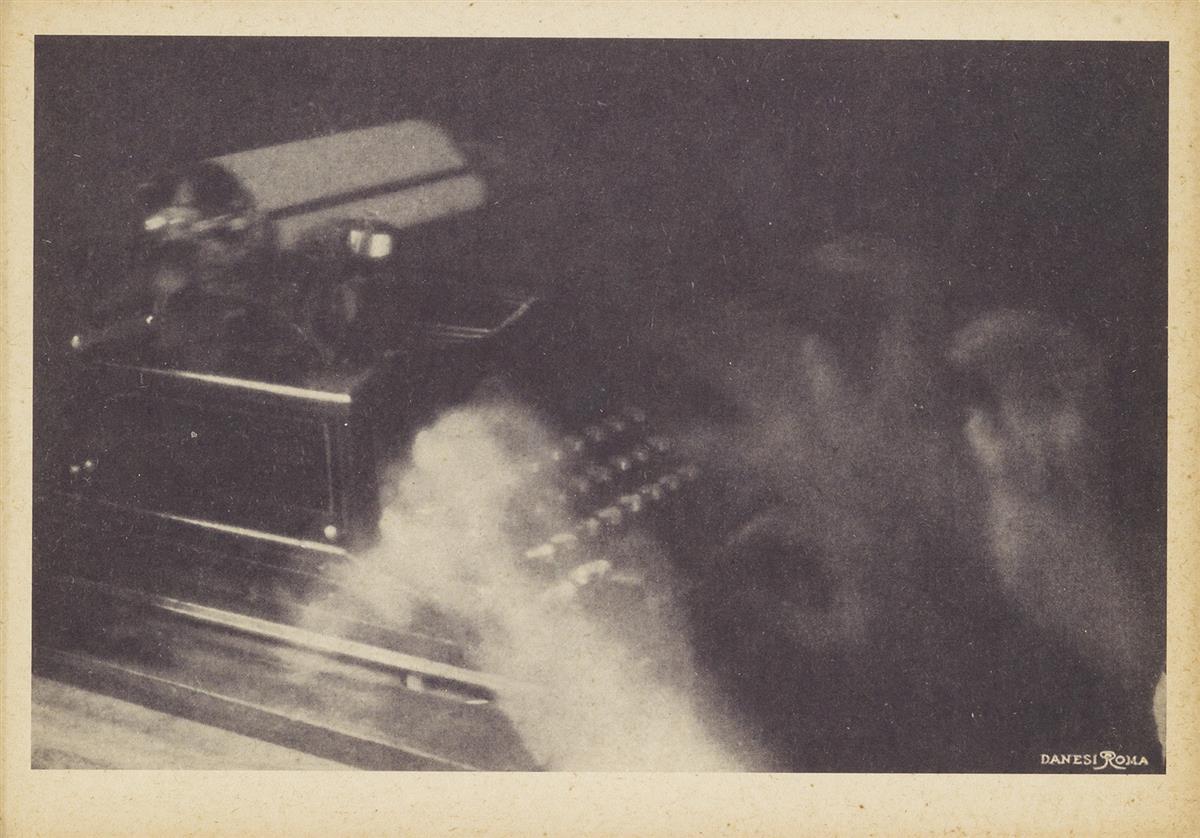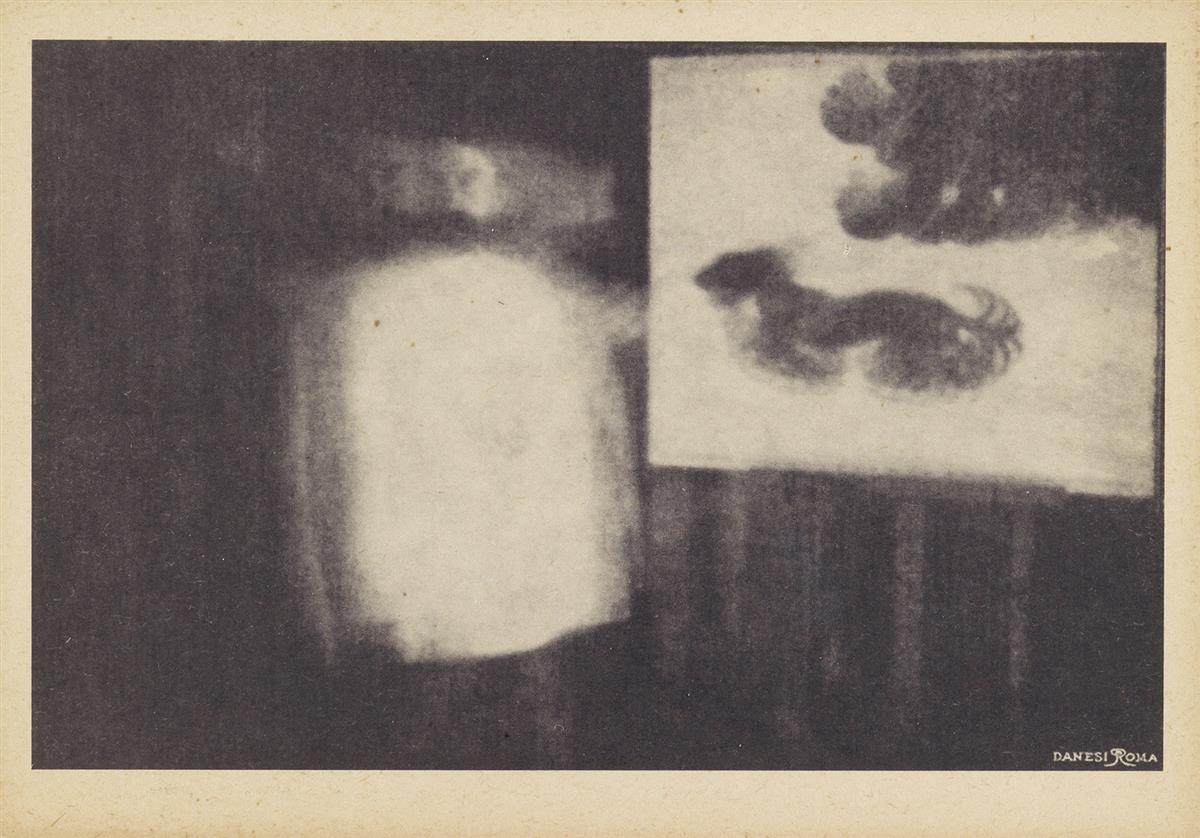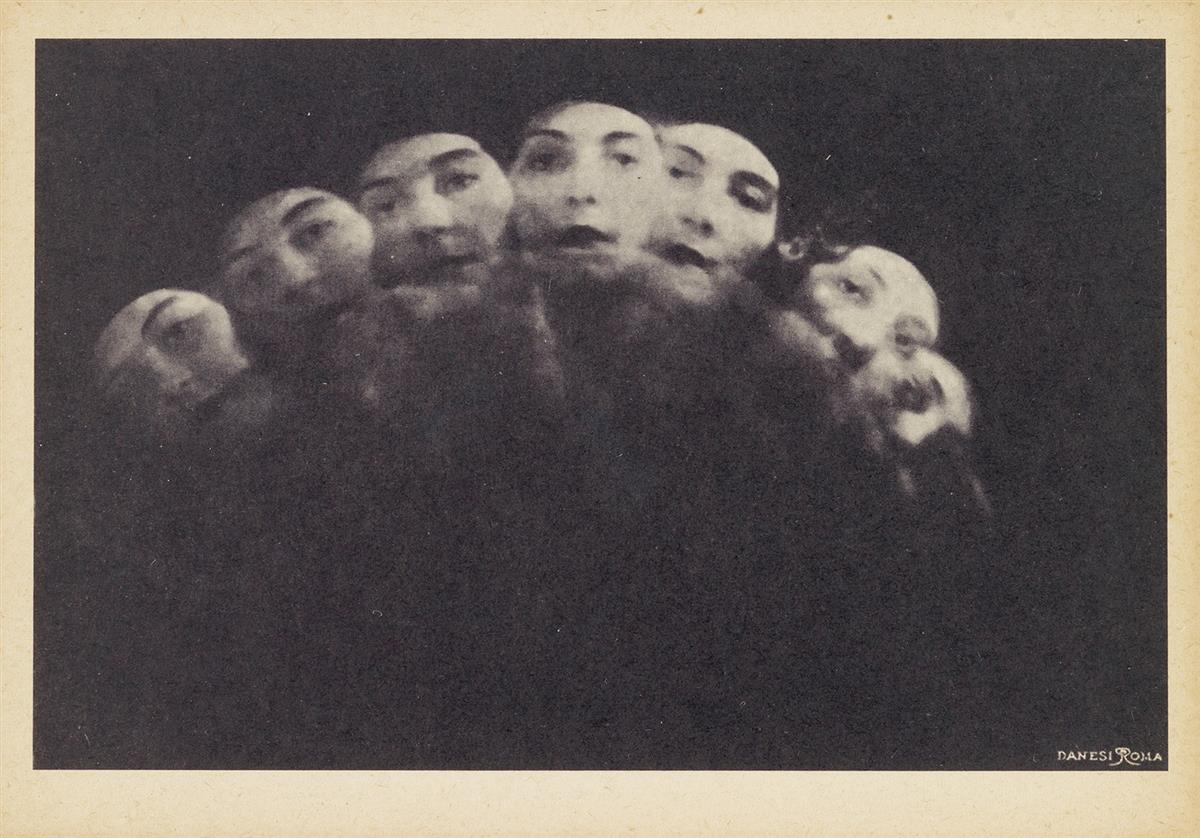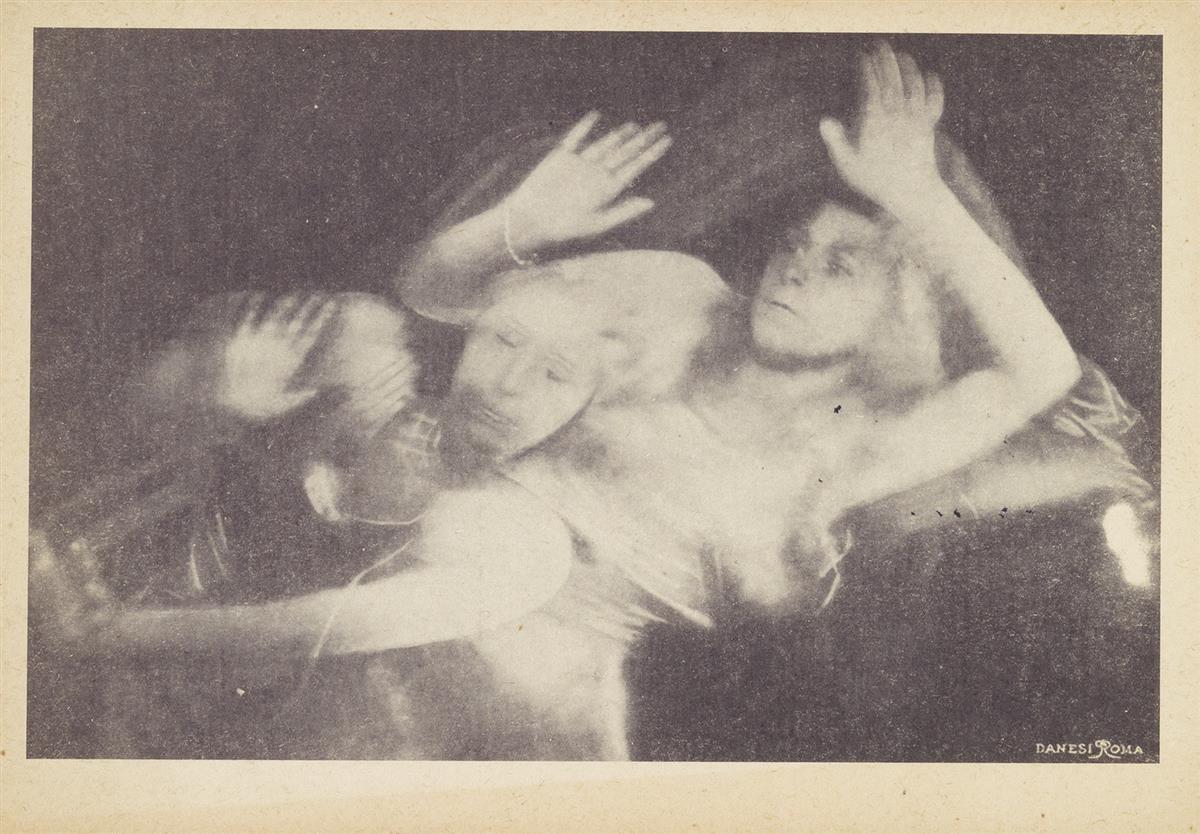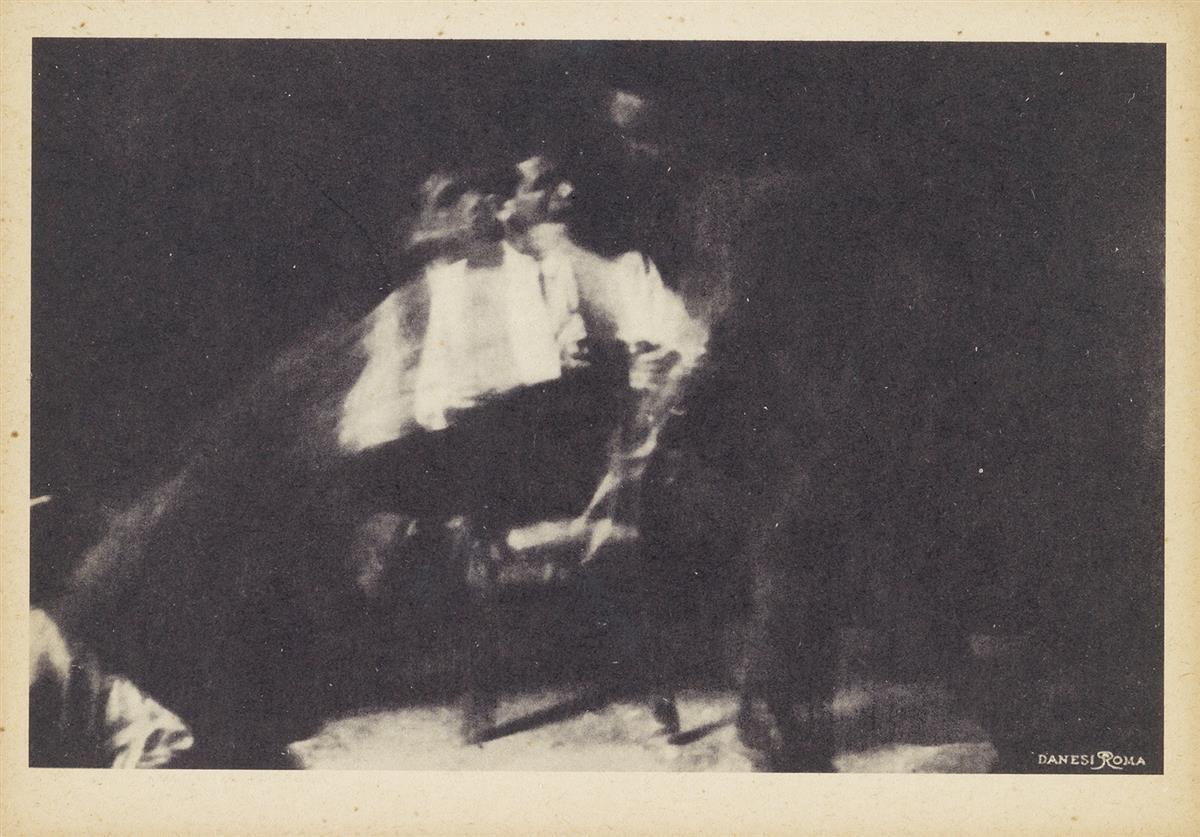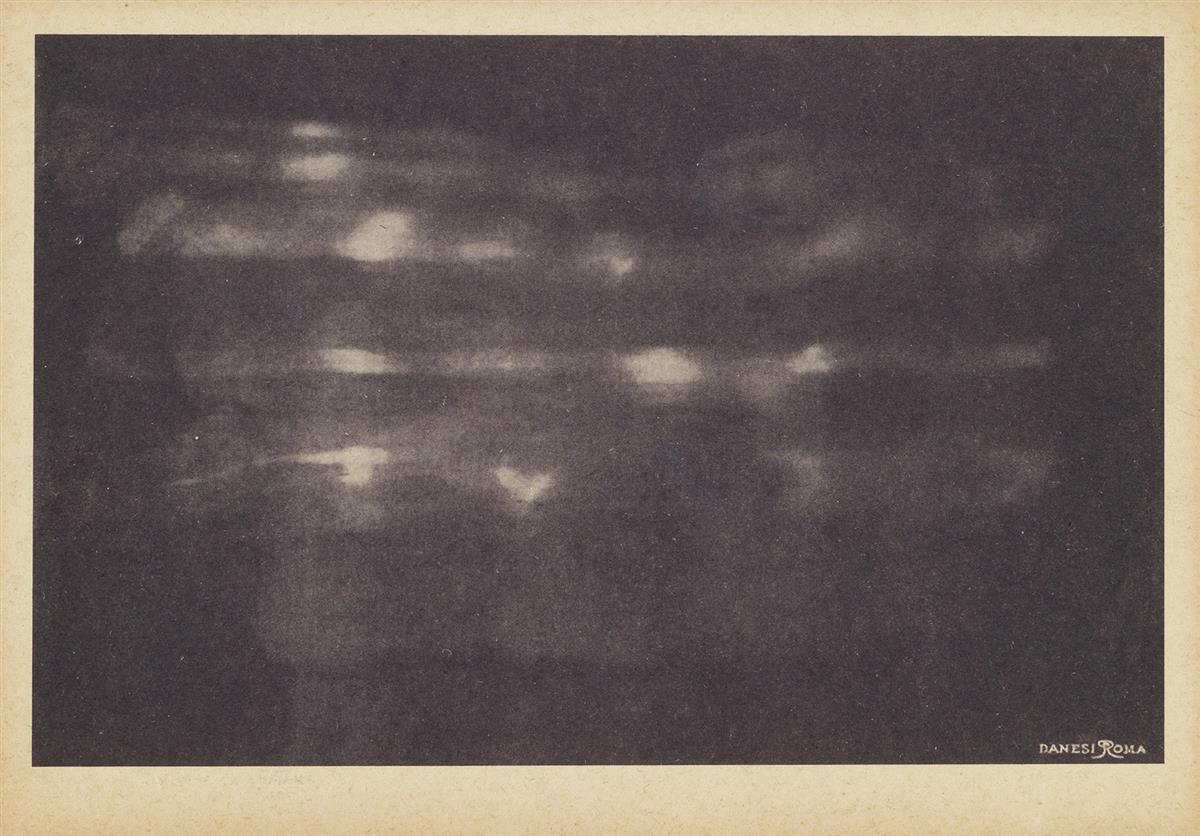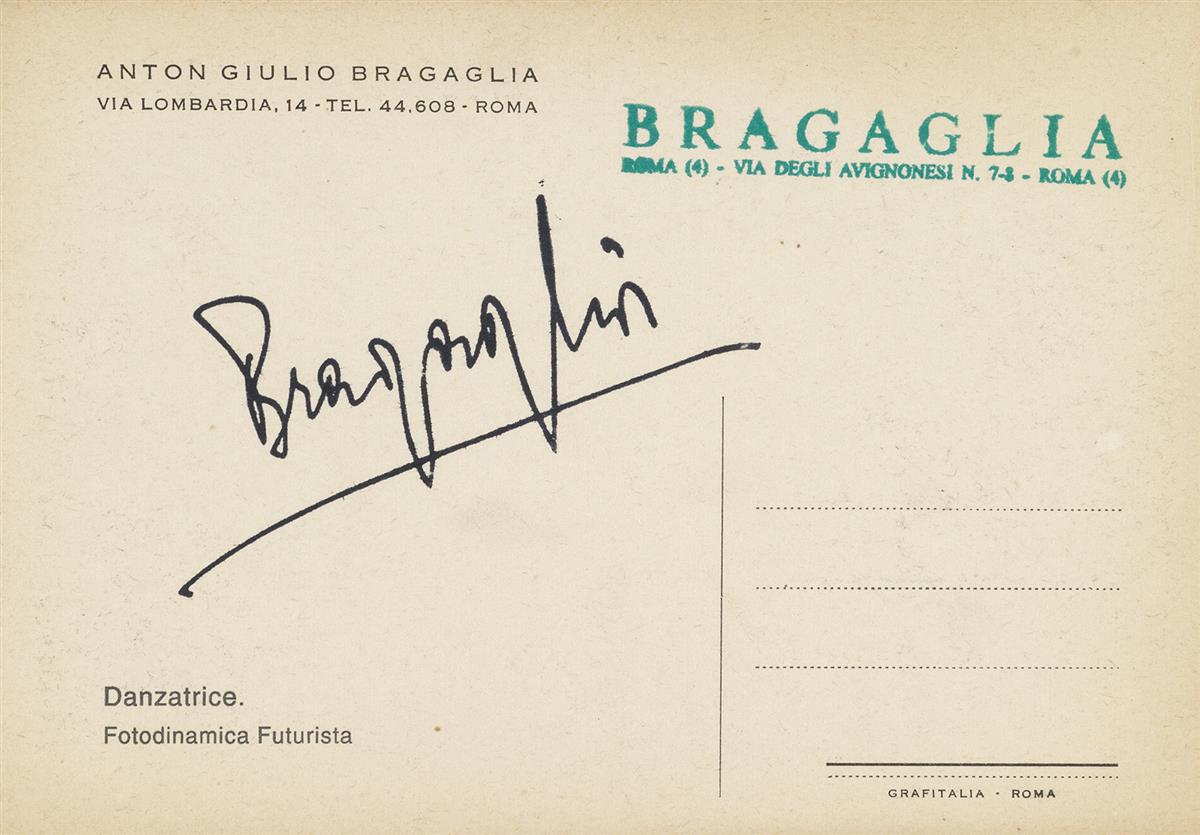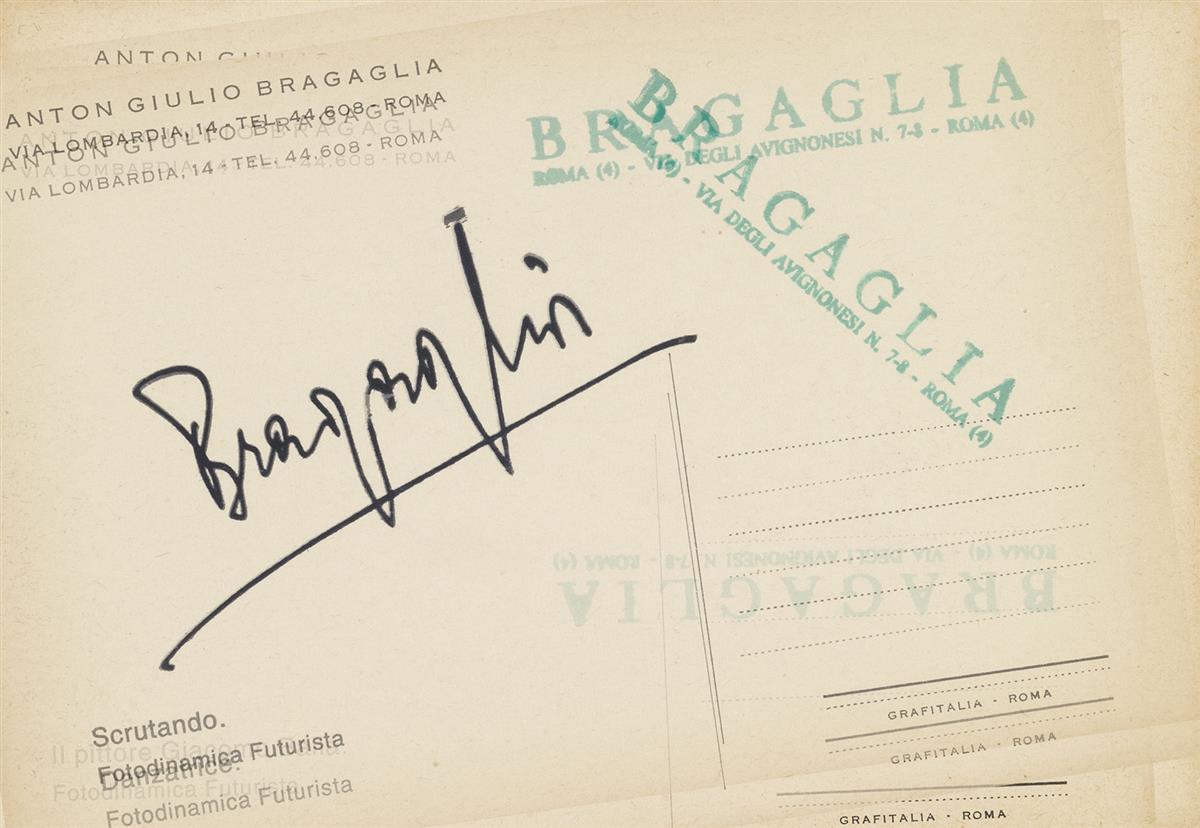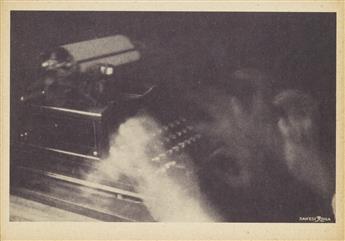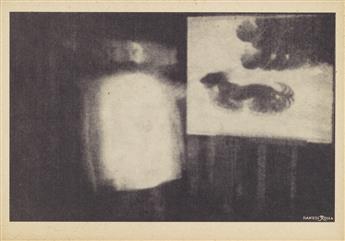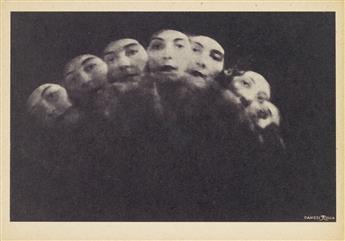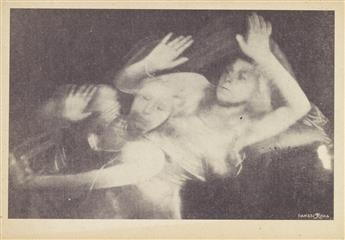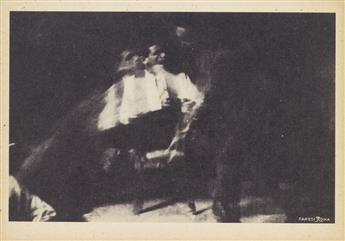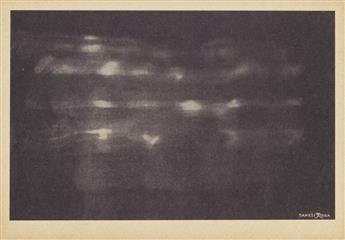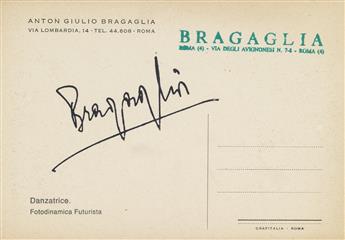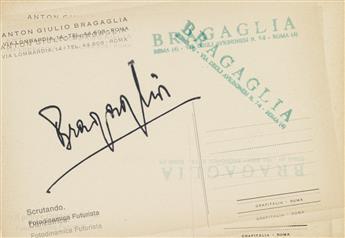Sale 2499 - Lot 48
Unsold
Estimate: $ 30,000 - $ 45,000
ANTON GIULIO BRAGAGLIA (1890-1960)
Mini-archive with 6 printed postcards of Bragaglia's iconic photographs from 1911-13. Also includes 5 printed business cards, one hand annotated "Saluti;" a 1932 typed letter to Filippo Tommaso Marinetti; 3 identical, commercially produced postcards from the Teatro di Palazzo Grazzi; and a Teatro Delle Arti ticket. Photomechanical postcards, the images measuring 3 1/2x5 1/2 inches (8.9x14 cm.), the sheets slightly larger, with a Danesi Roma credit in the plate, and Bragaglia's facsimile signature, a green hand stamp, and his printed "Via Lombardia, 14, Roma" address and credit all on verso. 1911-13; 1932
Mini-archive with 6 printed postcards of Bragaglia's iconic photographs from 1911-13. Also includes 5 printed business cards, one hand annotated "Saluti;" a 1932 typed letter to Filippo Tommaso Marinetti; 3 identical, commercially produced postcards from the Teatro di Palazzo Grazzi; and a Teatro Delle Arti ticket. Photomechanical postcards, the images measuring 3 1/2x5 1/2 inches (8.9x14 cm.), the sheets slightly larger, with a Danesi Roma credit in the plate, and Bragaglia's facsimile signature, a green hand stamp, and his printed "Via Lombardia, 14, Roma" address and credit all on verso. 1911-13; 1932
Additional Details
Dattilografa (Typist) Il Pittore Giacomon Balla (The Futurist Painter Giacomo Balla) Scrutando (Peering Woman) The Walking Man Danzatrice (The Dancers) Lo Schiaffo (The Slap).
The Futurist artists Anton Giulio Bragaglia and his brother, Arturo, were prankers-cum-photographers inspired by 19th-century motion studies by both Muybridge and Marey and Spiritualist images of mediums spouting ectoplasm. Anton Giulio emerged as a vocal spokesperson for the Futurist Movement, whose members had a complicated relationship with photography. Initially Boccioni would not acknowledge photography as an artistic medium. And Balla summarily dismissed the medium, which was characterized as static and "necromorphic." However for a brief two year period, 1911-13, the brothers produced a unique and innovative body of work that articulated a new representational modality, one that conveyed a kinetic sense of time and space. They preferred photographing performative daily activities--looking, dancing, walking, typing--to rendering static portraits. Bragaglia referred to his atmospheric, instantaneous studies as "photodynamics" and, in 1913, published "Fotodinamismo Futurista," which the art historian Giovanni Lista considers the "first essay on photographic theory and aesthetics to be produced by the avant-garde of the twentieth-century."
Ostracized by artists associated with the Futurist movement, unsurprisingly, by 1914, Anton Giulio began to focus his attentions on film. And in October 1918 he opened the Casa d'arte Bragaglia [Bragaglia's House of Art], which existed in Rome until 1943 as an exhibition space for Futurist art and a destination for intellectuals and artists. With his brother Carlo Ludovico Bragaglia he also created the Teatro degli Indipendenti in 1922, a theater they operated until 1928.
The letter to Marinetti, which is signed by Bragaglia and on the Compagnia del Teatro Delle Arti stationery, is enclosed in an (unmailed) envelope. A translation from the Italian reads: "A series of Fotodinamiche postcards is attached to the present, which may be distributed on the occasion of the Trieste exhibition. Please let me know if it should proceed."
The Futurist artists Anton Giulio Bragaglia and his brother, Arturo, were prankers-cum-photographers inspired by 19th-century motion studies by both Muybridge and Marey and Spiritualist images of mediums spouting ectoplasm. Anton Giulio emerged as a vocal spokesperson for the Futurist Movement, whose members had a complicated relationship with photography. Initially Boccioni would not acknowledge photography as an artistic medium. And Balla summarily dismissed the medium, which was characterized as static and "necromorphic." However for a brief two year period, 1911-13, the brothers produced a unique and innovative body of work that articulated a new representational modality, one that conveyed a kinetic sense of time and space. They preferred photographing performative daily activities--looking, dancing, walking, typing--to rendering static portraits. Bragaglia referred to his atmospheric, instantaneous studies as "photodynamics" and, in 1913, published "Fotodinamismo Futurista," which the art historian Giovanni Lista considers the "first essay on photographic theory and aesthetics to be produced by the avant-garde of the twentieth-century."
Ostracized by artists associated with the Futurist movement, unsurprisingly, by 1914, Anton Giulio began to focus his attentions on film. And in October 1918 he opened the Casa d'arte Bragaglia [Bragaglia's House of Art], which existed in Rome until 1943 as an exhibition space for Futurist art and a destination for intellectuals and artists. With his brother Carlo Ludovico Bragaglia he also created the Teatro degli Indipendenti in 1922, a theater they operated until 1928.
The letter to Marinetti, which is signed by Bragaglia and on the Compagnia del Teatro Delle Arti stationery, is enclosed in an (unmailed) envelope. A translation from the Italian reads: "A series of Fotodinamiche postcards is attached to the present, which may be distributed on the occasion of the Trieste exhibition. Please let me know if it should proceed."
Exhibition Hours
Exhibition Hours
Aliquam vulputate ornare congue. Vestibulum maximus, libero in placerat faucibus, risus nisl molestie massa, ut maximus metus lectus vel lorem.



